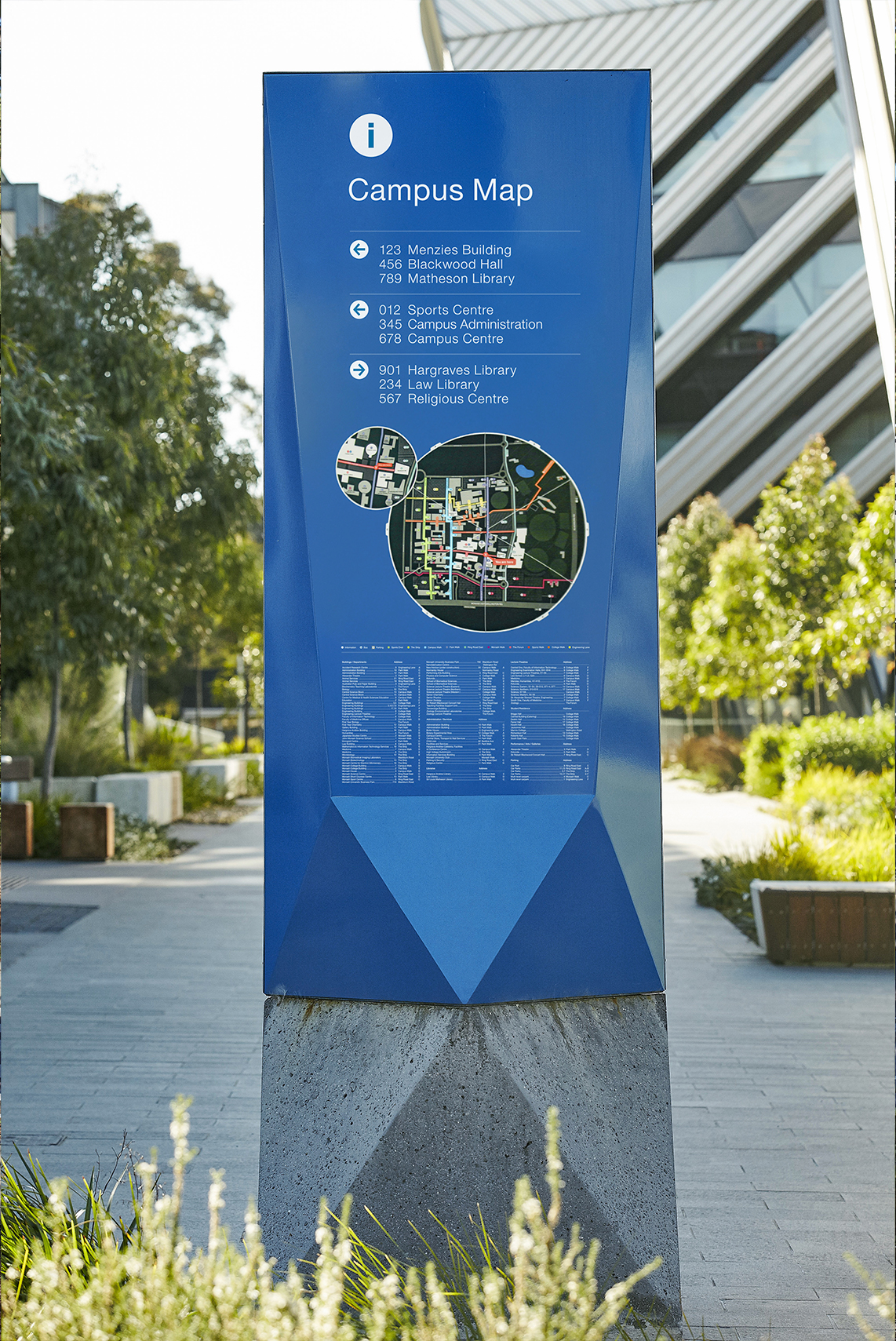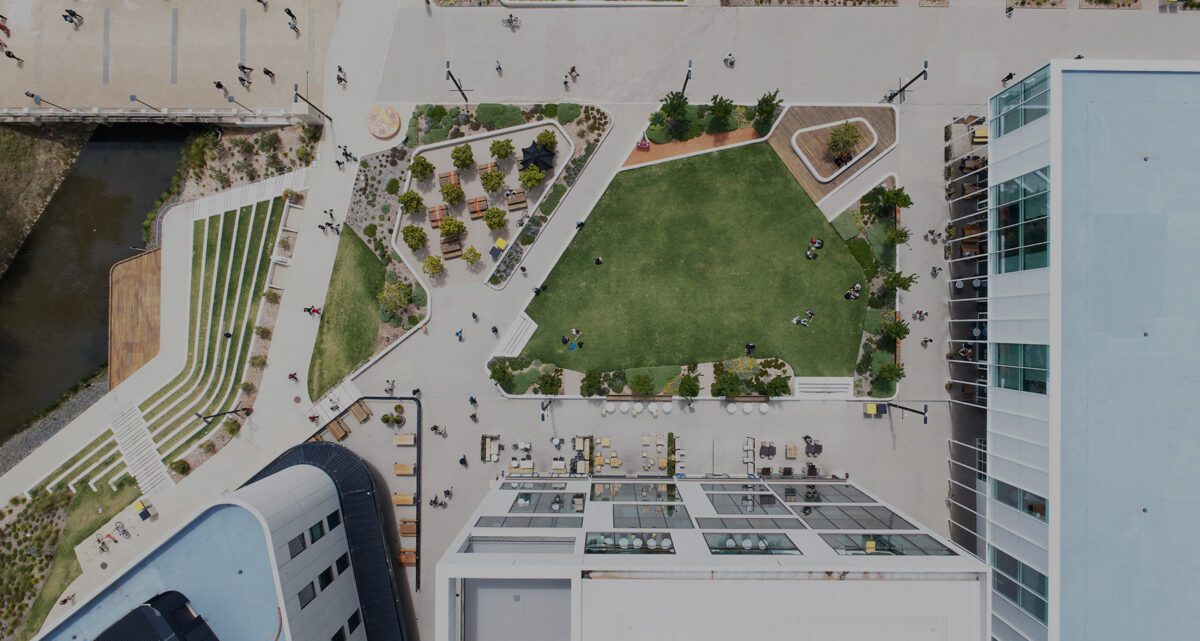Overview
Büro North collaborated with Monash University to develop a new addressing strategy, wayfinding principles, and signage system for their campuses. This initiative aimed to create a robust and flexible strategy, allowing the university to self-manage their signage needs, supported by contemporary designs that align with their brand vision and future campus design principles.
Our process began with extensive testing of existing conditions, followed by a re-evaluation of the design solution. The results were clear: 100% of users could find themselves on the campus map, compared to just 52% previously. Performance improvements were also seen in identifying major pathways, buildings, and route/journey planning.
The wayfinding strategy was designed to enhance the pedestrian environment, addressing issues including three decades of prioritising vehicle circulation, and counter-intuitive building numbering. By establishing a hierarchy of primary and secondary pedestrian pathways, we created simple and legible journeys throughout the campus. The wayfinding structure planning, re-addressing of streets, walks and ways and re-numbering buildings was a key strategy aligned to the new Monash Clayton masterplan developed by MGS Architects.
The new wayfinding system has been positively received by both the university and users, proving durable with cleaning, graffiti, and vandalism, and supporting a seamless navigation experience for staff, students, and visitors. Our design leveraged the upturned triangle from the university crest, creating a modular and scalable solution that could be easily updated to accommodate future changes, ensuring a sustainable long-term wayfinding system with a lifespan of 15+ years.

Büro North's approach delivered on all aspects of the brief. It was a pleasure working with the team who met every stage of the project with meticulous detail and enthusiasm”…
Bradley WilliamsonDirector, Strategic Planning - Monash University
We engaged directly with students and staff on campus, observing navigation challenges, especially for those with cultural and linguistic diversity. Testing solutions onsite with low-fidelity cardboard mock-ups helped us assess mapping, naming conventions, and key movement sight-lines. End-user feedback refined our design strategy, enhancing overall navigation and legibility for all campus users.





























